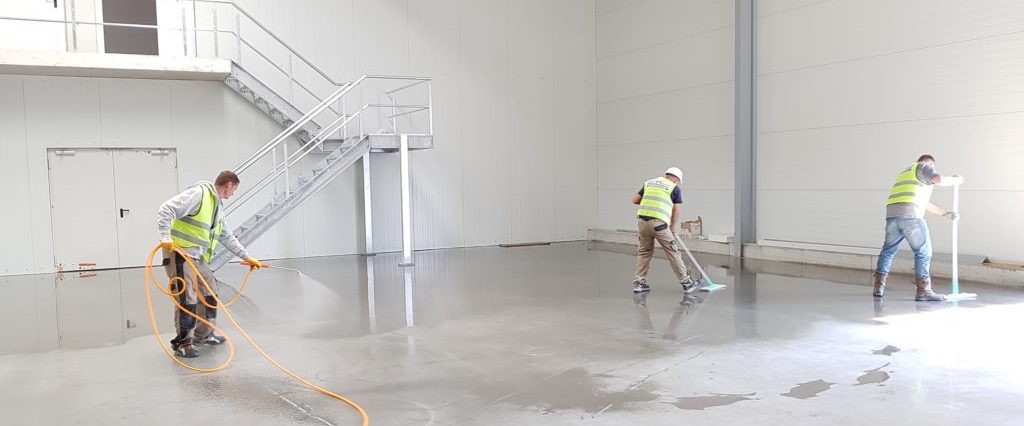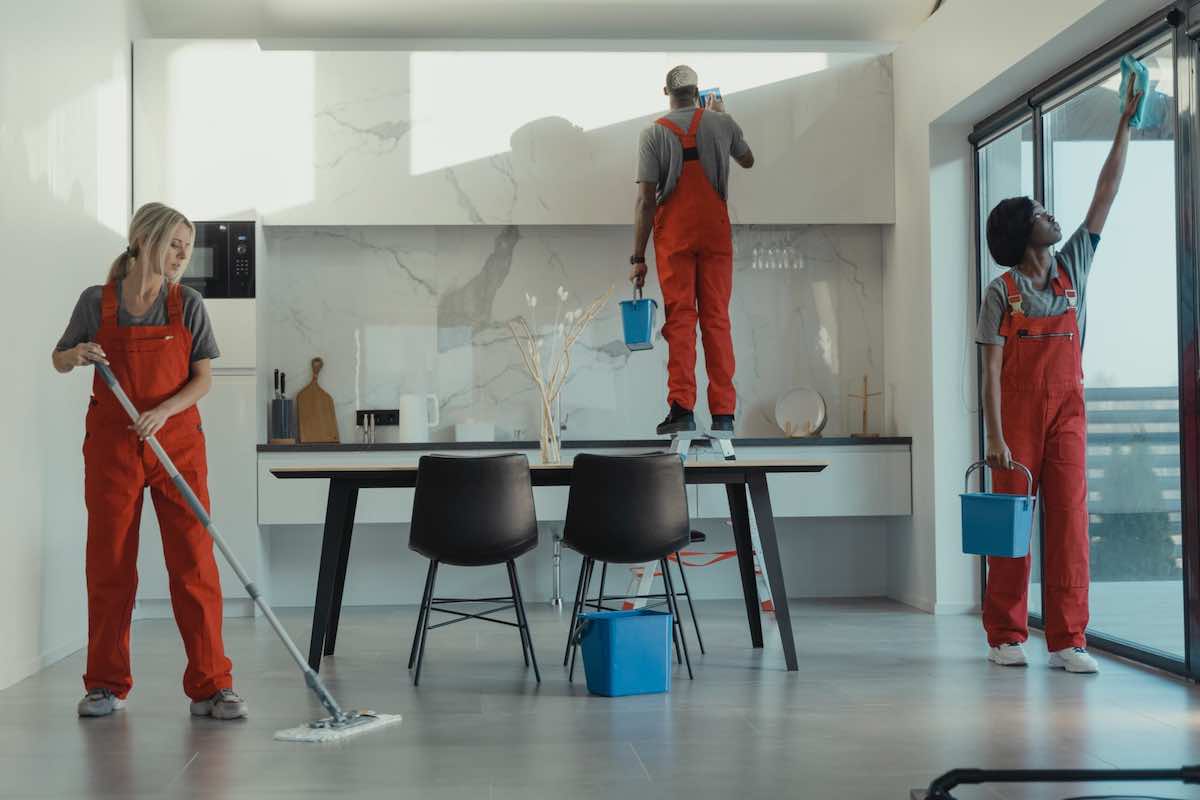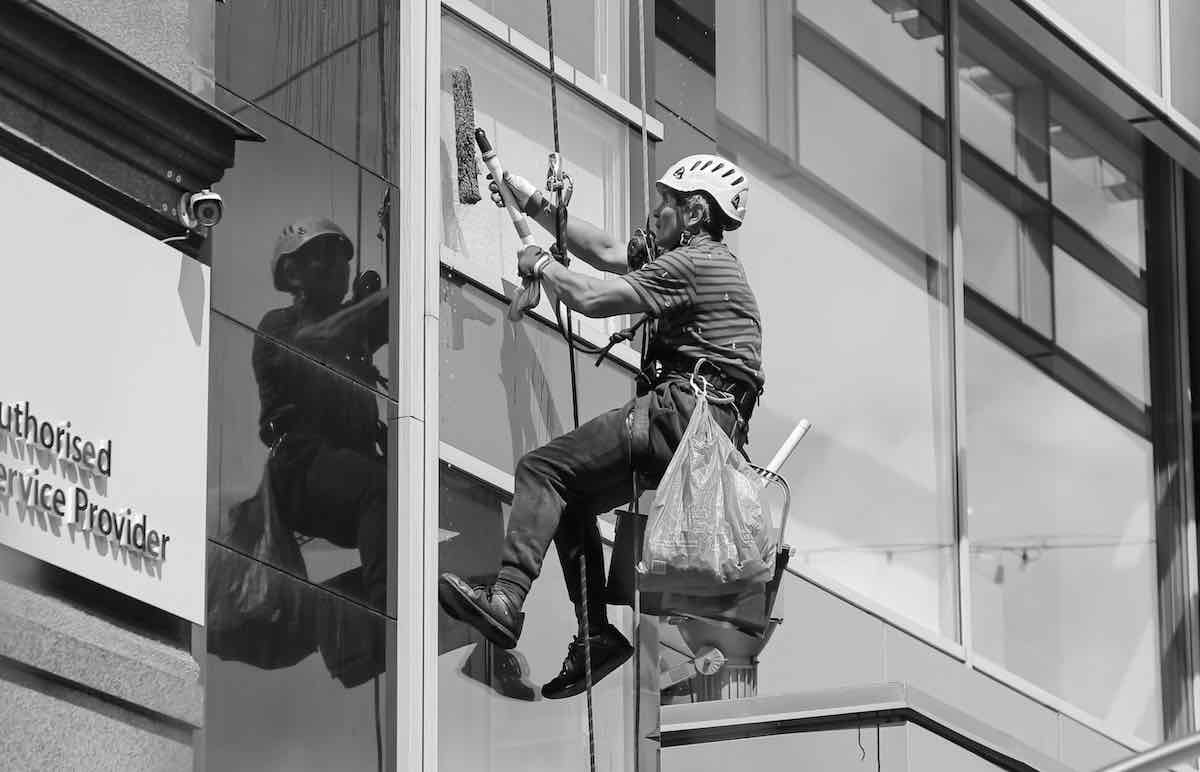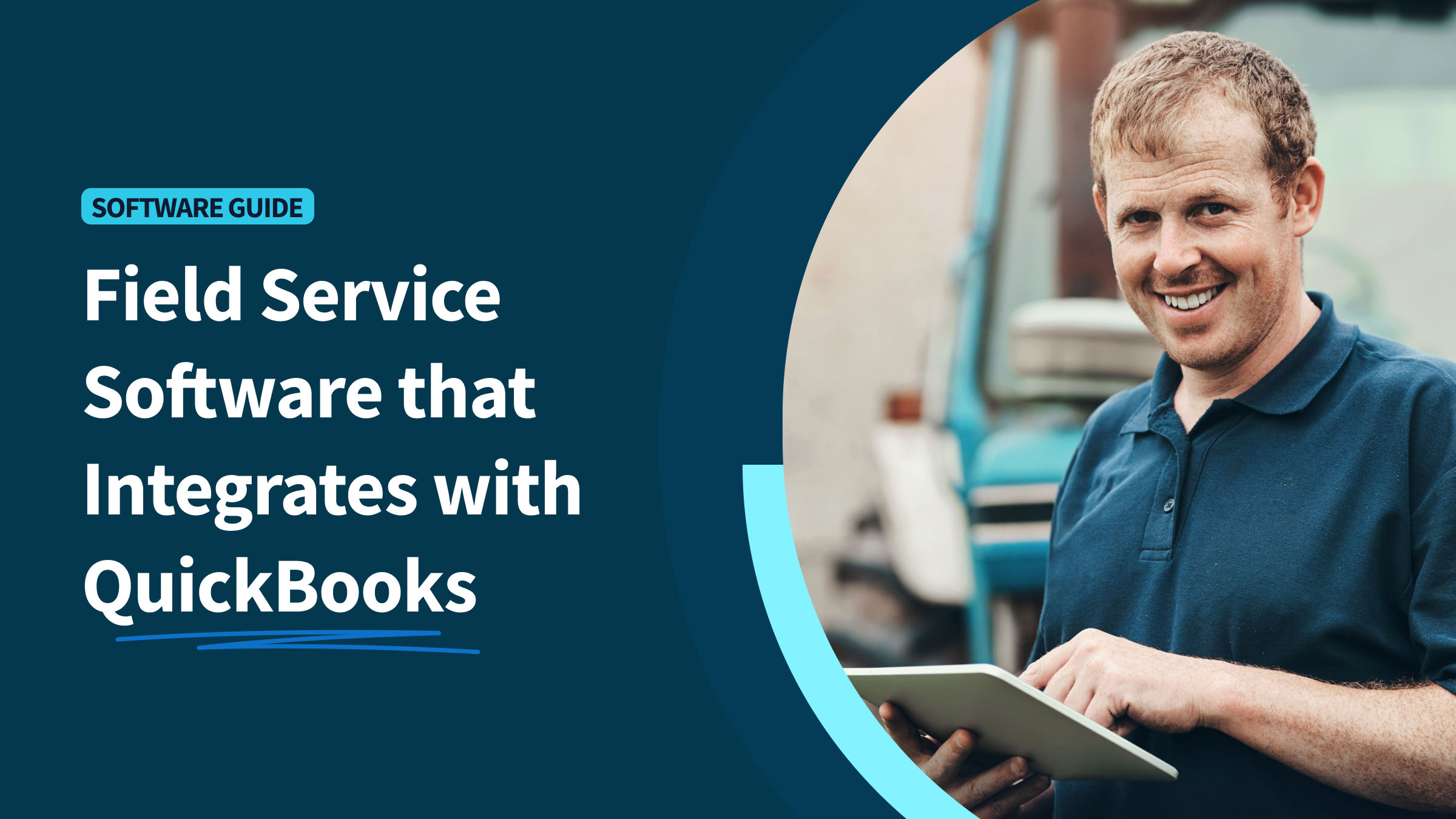Knowing how to price a commercial cleaning job can be tricky, especially if you’re competing with other businesses in your area. You have to consider your hourly rate, overhead costs, cleaning supplies, fleet, and building size.
While there is no perfect formula for determining how much to charge for your services, there are ways to determine a fair price and earn a profit. In this guide, you’ll learn how to use cleaning cost factors to determine how much to charge for your services.
What you’ll learn in this guide
Before hopping into the guide, here is an overview of what you’ll learn:
How much does commercial cleaning cost business owners?

Image credit: BECOSAN via Pexels
How much it costs to start a commercial cleaning business varies but an initial investment costs between $2,000 and $6,000. Use this startup checklist to determine factors that affect your expenses, such as:
- Location and licensing: You may need to purchase an exclusive business license depending on your location. Individual entrepreneurs can expect to pay between $40 and $60, while limited liability companies will have to pay between $100 and $500.
- Equipment: If you offer more than one type of service, equipment costs can stack up. Maintaining a truck or fleet is another expense to budget for.
- Employees: How many employees you hire significantly impacts your costs. Unless you hire employees on a contractual basis, most will charge between $25 and $45 an hour.
Marketing: To reach hundreds of new potential customers, you’ll have to invest in effective advertising strategies. How much you spend will depend on whether you want to invest in digital or physical advertising.
Average commercial cleaning prices
A good way to get an idea of how to price a commercial cleaning job is to look at average rates. Commercial cleaning rates can vary from $0.07 to $0.15 per square foot or between $50 and $100 an hour.
These rates will vary according to what service you provide. For instance, the square foot rates for these commercial cleaning jobs are:
- Stripping and waxing: $0.30 – $0.50 per square foot.
- Carpet cleaning: $0.08 – $0.25 per square foot.
- Buffing: $0.04 – $0.12 per square foot.
- Ceramic tile cleaning: $0.12 – $0.21 per square foot.
- Window cleaning: $2 – $5 per window pane.
Your price per square foot will also depend on how much your business makes on average.
Commercial cleaning cost factors
There are a handful of factors to consider when figuring out how to price a commercial cleaning job. To determine your pricing strategy, look at these elements.
Building size
Naturally, the larger the building, the lower you’ll bid for square footage. Larger buildings also mean more rooms to clean.
Building type
Depending on the type of building you’re cleaning, the property may require specialized equipment or services. For instance, a hospital building may require additional disinfection, while general cleaning may suffice for an office.
This is an essential factor to consider when learning how to price a commercial cleaning job.
Room type
Some rooms like bathrooms or kitchenettes see more traffic, so they take longer to clean and require extra equipment.
Type of cleaning service
Some commercial cleaning services are more expensive than others. For instance, stripping and waxing typically costs more than vacuuming.
Some larger buildings might also require regular deep cleaning as opposed to basic cleaning. In these cases, a retainer is helpful.
Office building conditions
A well-maintained commercial building usually requires basic cleaning, but a poorly maintained building may have stains, dust, and other damage for you to deal with.
Onsite inspections are an excellent way to learn how to price a commercial cleaning job.
Job location
While optimizing your routes can reduce mileage and maximize productivity, traveling farther will still demand more of your time and fleet budget. Keep this in mind when taking on new cleaning jobs.
Demand for commercial cleaning services
While charging a rate based on your specific overhead, offerings, and maintenance is the best way to price your services, it can pay off to study demand within your area.
If cleaning services are hard to come by, charging higher may not make sense. Leave space for your pricing to change according to how frequently clients in your area seek your services.
Cleaning frequency
If you run an in-demand commercial cleaning company, it makes sense to charge less the more frequently you work with a client. The more times you visit an office space, the less likely you’ll have a lot to clean.
Experience
If you are new to the industry and working in an area where cleaning services are frequently in-demand, it can be challenging to price your services up. Instead of underselling your business, consider building your repertoire and charging premium prices as you grow.
How to price commercial cleaning jobs
Now that you know what factors affect how to price a commercial cleaning job, it’s time to start charging with these simple steps in mind.
Step 1: Outline the job details
First, you’ll want to calculate according to the factors you read above. One of the best ways to get project scope is to visit the job site and schedule a consultation with your client.
From there, you can provide a list of potential tasks that your services will cover.
Step 2: Calculate your labor cost

Image credit: Pixabay via Pexels
Calculating labor costs involves more than just predicting how much time it might take to work on a specific site. Consider these factors as well.
Labor hours
Determine how long it will take to complete a specific job by using time-tracking software or referring to previous projects. Then, calculate this number by how many employees it will take to complete the job.
For example, if it will require 100 hours to complete a job with four employees, your labor hours will equal 400.
Hourly labor cost
Calculate your hourly labor cost by accounting for factors like taxes, wages, and employee-related expenses. Most cleaning business owners add 20% to basic wages. Therefore, if you compensate your employees $20 an hour, your hourly labour cost equals $2.
Step 3: Consider overhead, insurance, and equipment
As with your hourly labor costs, adding 20-25% to your overhead costs will help you determine the job’s total cost.
Step 4: Input markup
Markup percentages indicate how much profit you’ll make from the job. This amount will depend on your industry and location, so ensure that you study service demand within your area.
Commercial cleaning job pricing FAQs
How do you quote a commercial cleaning job?
When figuring out how to price a commercial cleaning job, keep in mind factors like your overhead costs, equipment, employees, and existing market. You can then charge:
- An hourly rate.
- A flat rate.
- A square footage price.
- An average room rate.
How much should I charge per square foot for cleaning?
How much you charge according to square footage will depend on:
- How long it takes you to clean one room.
- The condition of the building.
- Whether the building requires specialized services.
- How many employees it’ll take to clean the area.
- How far the location is from your headquarters.
- The current demand for your services.
Wrap up: How to price a commercial cleaning job
Learning how to price a commercial cleaning job involves many variables that can be confusing. However, getting to know your industry and what goes into completing a job can help inform your pricing decisions.
To keep better track of your clients and expenses, Method:Field Services is the tool you need. This all-inclusive cleaning solution that automates your:
- Job scheduling and routing.
- Billing and invoices.
- Customer and lead management.
- Employee time tracking.
Focus on aspects of your business that truly matter most with Method:Field Services automation tools!
Image credit: Vlad Fonsark via Pexels






